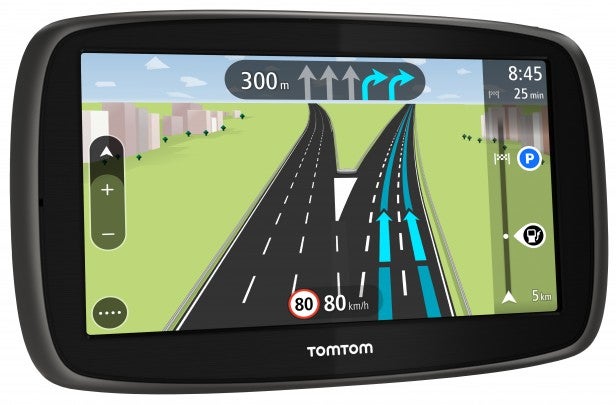TomTom GO 50 Review
TomTom GO 50
Lifetime traffic and Euro map updates in an affordable 5-inch package
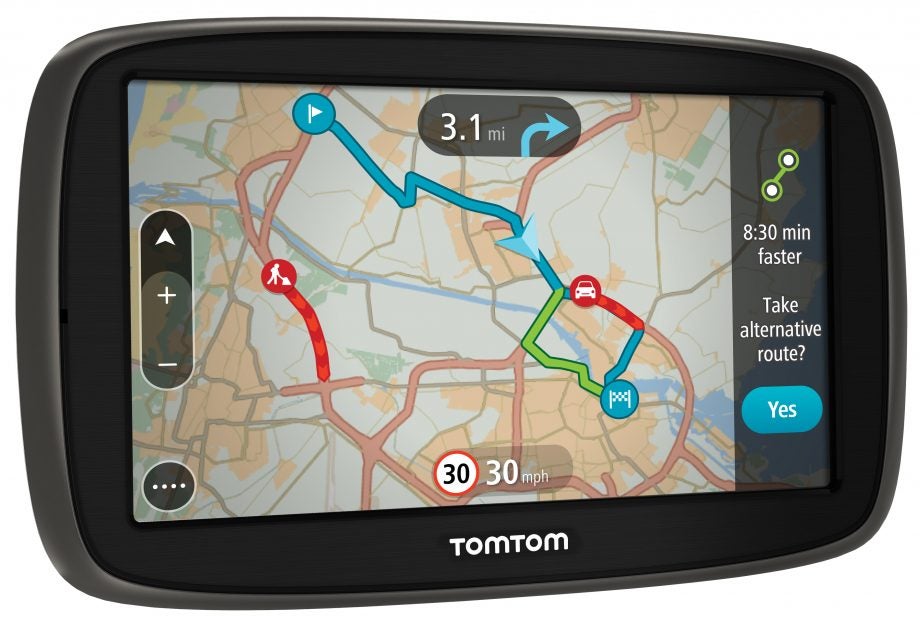
Verdict
Pros
- Lifetime TomTom Traffic
- Lifetime European maps
- Great value
Cons
- Live services require smartphone connection
- Relatively low-resolution resistive touchscreen
Key Specifications
- Review Price: £129.99
- 5-inch 480 x 272-pixel widescreen display
- Maps for 45 European countries with lifetime updates
- Lifetime TomTom Traffic
- Live services via smartphone
- Integrated mounting system
What is the TomTom GO 50?
The TomTom GO 50 sits in the middle of the basic GO x0 range, which is just above the entry-level Start series and offers a lifetime subscription to TomTom’s brilliant Traffic service. The GO 50 is the 5-inch version, and is therefore very similar to the TomTom GO 40 and TomTom GO 60. However, a new software update has brought yet more sophistication to the routing system.
TomTom GO 50 – Design and Features
The routing improvement comes from additions to the information that Traffic provides. This now checks for severe weather reports when calculating a route. When heavy rain or snow, or any other adverse weather condition, is hampering traffic flow or possibly even stopping it, you will be prompted to change route.
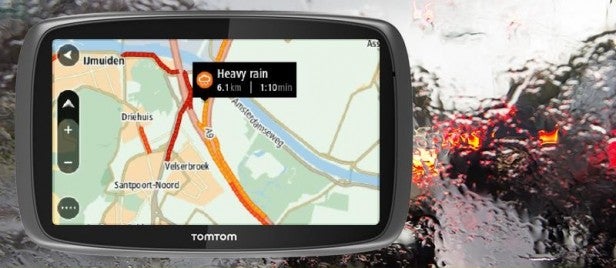
This is obviously a hard feature to test objectively, particularly as UK weather was reasonably clement in the latter half of 2014. In fact, during testing, the warning didn’t pop up at all, despite one of our journeys being a five-hour round trip. It’s likely that this new feature won’t be something that makes itself known very often, but it’s reassuring to have it there if needed.
The poor weather zone shows up on the overall traffic map, and also on the route bar on the right of the map display if it’s along your way. So you can get an overview and also see what’s coming up on your journey, as well as how far away it is.
The new weather feature isn’t exclusive to the GO 50, however. All of the recent GO devices can obtain it with the most recent software update. Another improvement with the new software update is the ability to avoid blocked roads, which was a significant omission before.
Related: 5 Best Dash Cams right now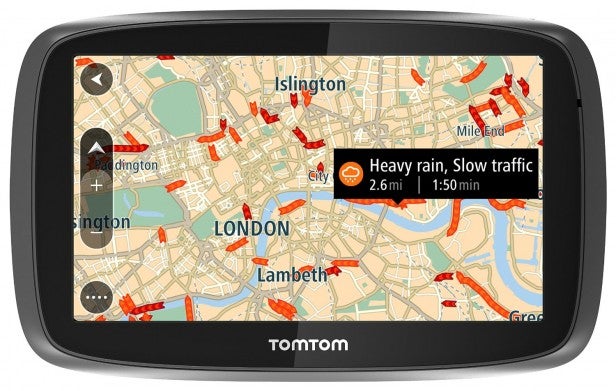
Being a GO x0 series rather than GO x000, however, the GO 50 requires your smartphone’s data connection to deliver its Live services. You need to pair the GO 50 with your phone, with the latter acting as a personal hotspot, for the Live services to be available. This is relatively easy to set up, and the system guides you through the process, including signing up for the traffic service.
Like the entry-level Start, the GO 50 sports an integrated mount, rather than keeping this separate so you can rapidly take the device in and out of your car. But on the plus side, the mount can be slid out and reinserted so it angles out from the bottom rather than the top. This will allow the GO 50 to be mounted on top of a dashboard rather than hanging down from the windscreen.
TomTom GO 50 – Screen & Interface
The display also gives a tell-tale sign that the GO 50 is a budget device. It’s resistive rather than capacitive, so there’s no pinch to zoom and the interaction is generally not so responsive. The resolution is a modest 480 x 272 pixels, which would be lowly in a smartphone but isn’t a particular problem for a sat-nav. We found the screen perfectly visible in regular conditions, but controlling the interface takes a little more care and attention compared to premium TomTom sat-navs with capacitive screens.
Otherwise, the GO 50 is another recipient of last year’s major interface redesign, which we first saw with the GO 500. The 2013 menu rethink was a major departure from the icon and feature creep of previous models. TomTom had rationalised its many icons with the GO 1000 and its siblings in 2011, but the 2013 models pared everything away and put the map to the fore.
If you’re used to an earlier TomTom, the fact that you can no longer simply tap on the screen to call up the menu will take a little getting used to. Instead, a circle containing three dots calls this up. The menu is also now a simple ribbon of icons you can swipe or scroll left and right, instead of layered pages of icons. However, it’s very easy to use once you understand how it works.
Finding a destination has been simplified by unifying the address and points of interest (POI) databases into one, so it’s possible to search across both with a single keyword. You can also search for a street name without needing to enter a town first, which can make for quick destination discovery when the road you are looking for has a unique title. You can focus down to near your current location, a specific city, along your route or near the destination.
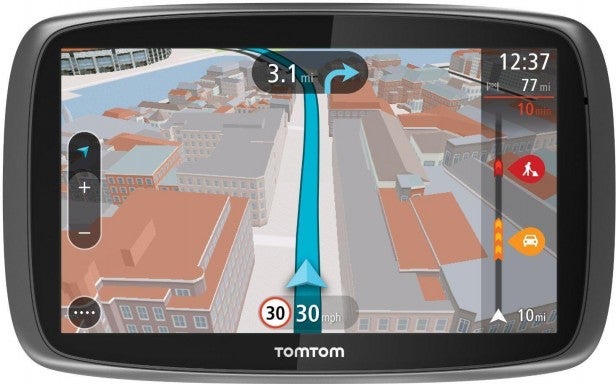
When your phone is paired, you can search for POIs online, although this is not as effective as it was when Google Local Search was used in earlier devices. You can also call up voice control, for hands-free verbal operation, which is extremely effective for its limited range of menu choices. You can save a list of favourites in My Places, and also call up recent destinations. Multi-waypoint journeys can be created, saved, and recalled using My Routes. So there is a comprehensive set of options for setting up your navigation.
Alongside the simplified menu, TomTom simplified the map as well in the 2013 update. The background detail is more subtly shaded, which has made the route you’re actually on stand out more clearly. You can add in a different set of colours if you want, with alternative theme options, although all use relatively subtle colours for the background. By default, there isn’t quite as much information as there was with earlier TomTom map screens. Most of this has now been moved to the Route Bar on the right.
Your current speed and the limit is shown on the bottom of the screen, with just the distance to the next turning and its direction at the top. The Route Bar shows the estimated arrival time, the distance to the destination, plus traffic jams and speed cameras as you approach them. However, you can switch the Route Bar to a wider mode that also includes the time to destination, petrol stations plus parking opportunities along your route.
Overall, there’s an effective amount of information about your journey available, and the simplification avoids confusing clutter. We have found TomTom’s streamlined menu and maps very easy to use, and the GO 50 still includes the full-screen junction graphics and 3D buildings in cities. So you’re getting almost the same navigational experience as the premium GO models.
Should I buy the TomTom GO 50?
The TomTom GO 50 is a capable sat-nav, and at the time of writing was available for under £130 from some vendors. We still think the 4.3-inch GO 40 is the price sweet spot of the range, being the cheapest route to TomTom’s Traffic service. But if you do want a larger screen, the GO 50 is around £10 more, making it almost as affordable and still very good value.
Verdict
The TomTom GO 50 marks the introduction of weather warnings, but the great value it represents for a 5-inch sat-nav is the main attraction.
Trusted Score
Score in detail
-
Battery Life 8
-
Value 9
-
Features 8
-
Performance 9
-
Design 9
-
Usability 9


